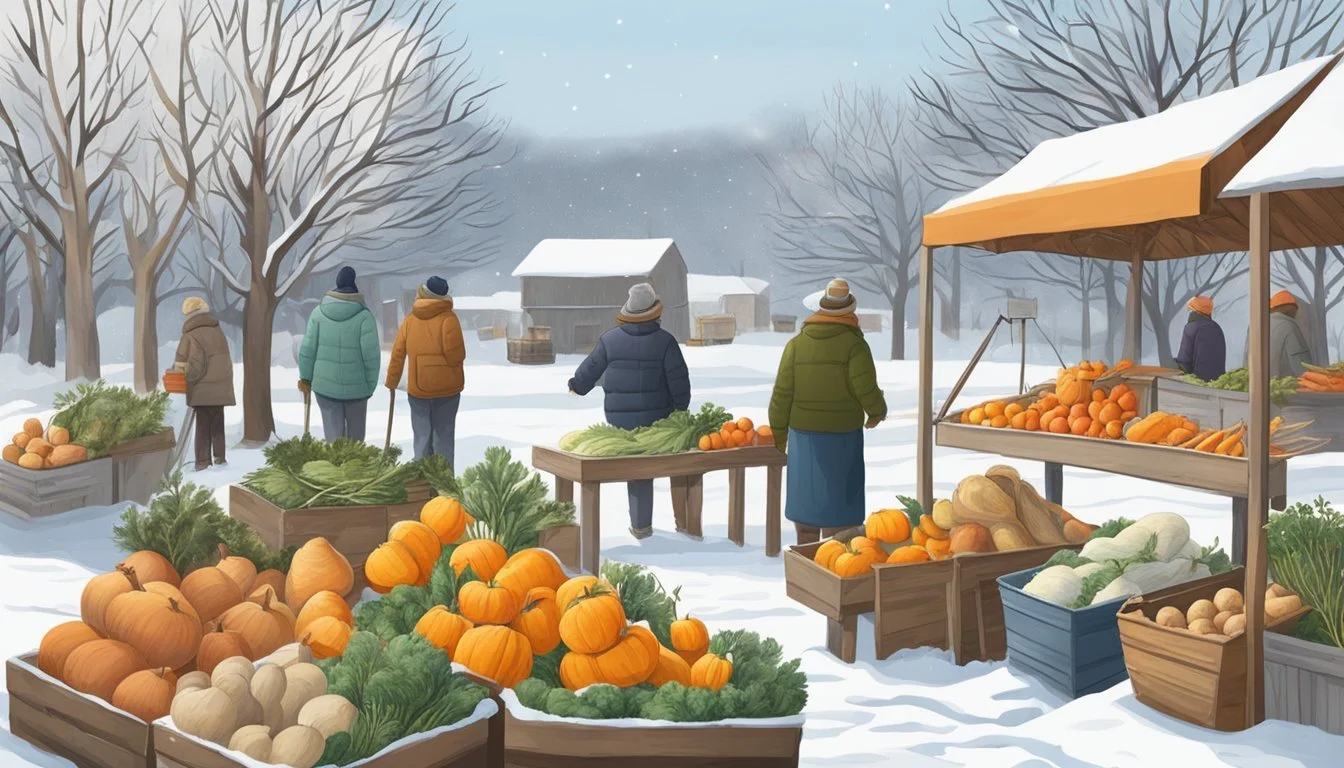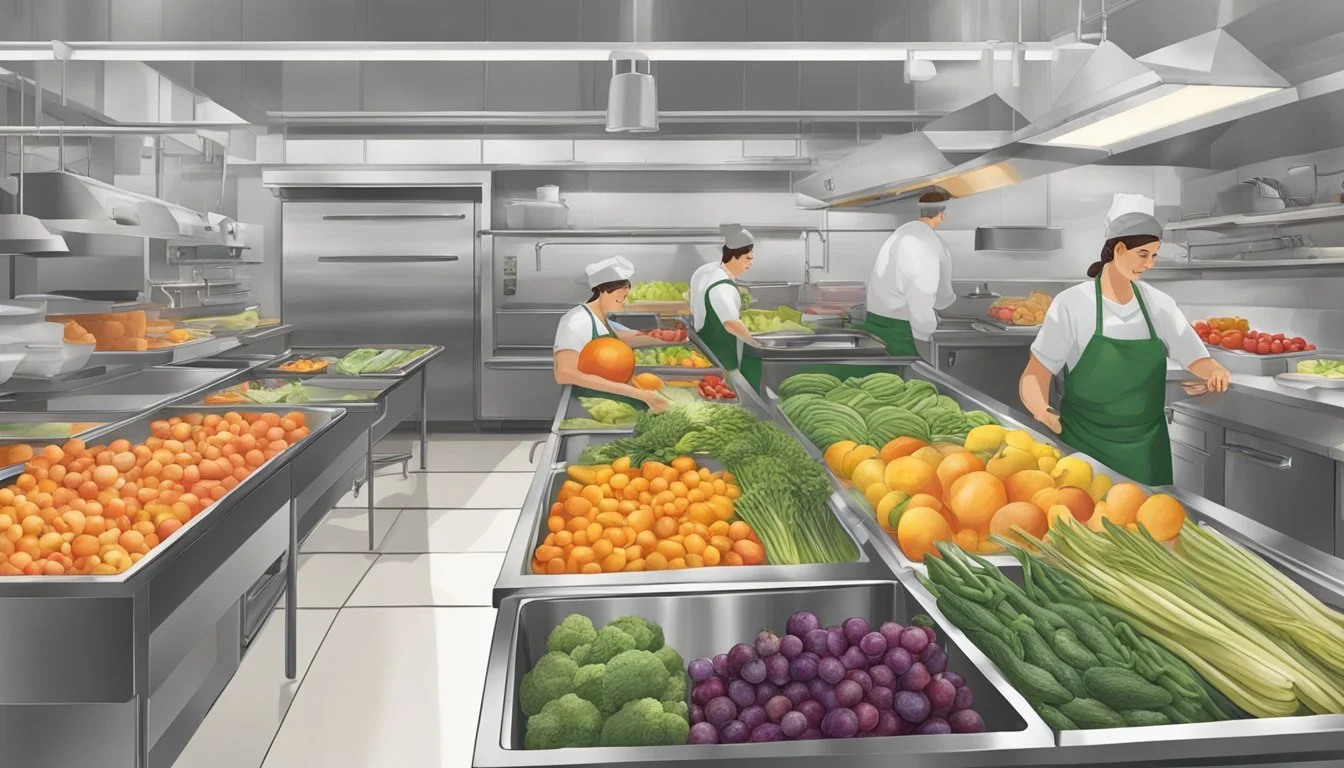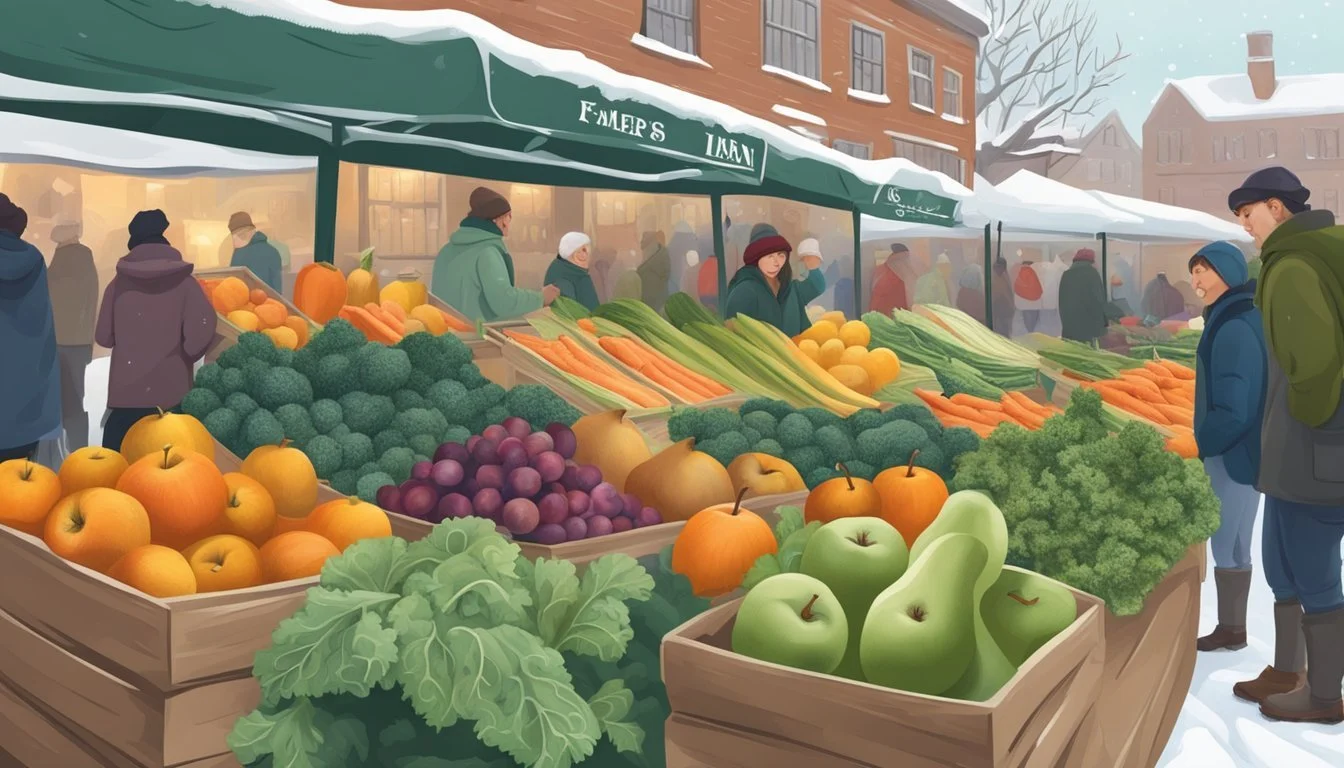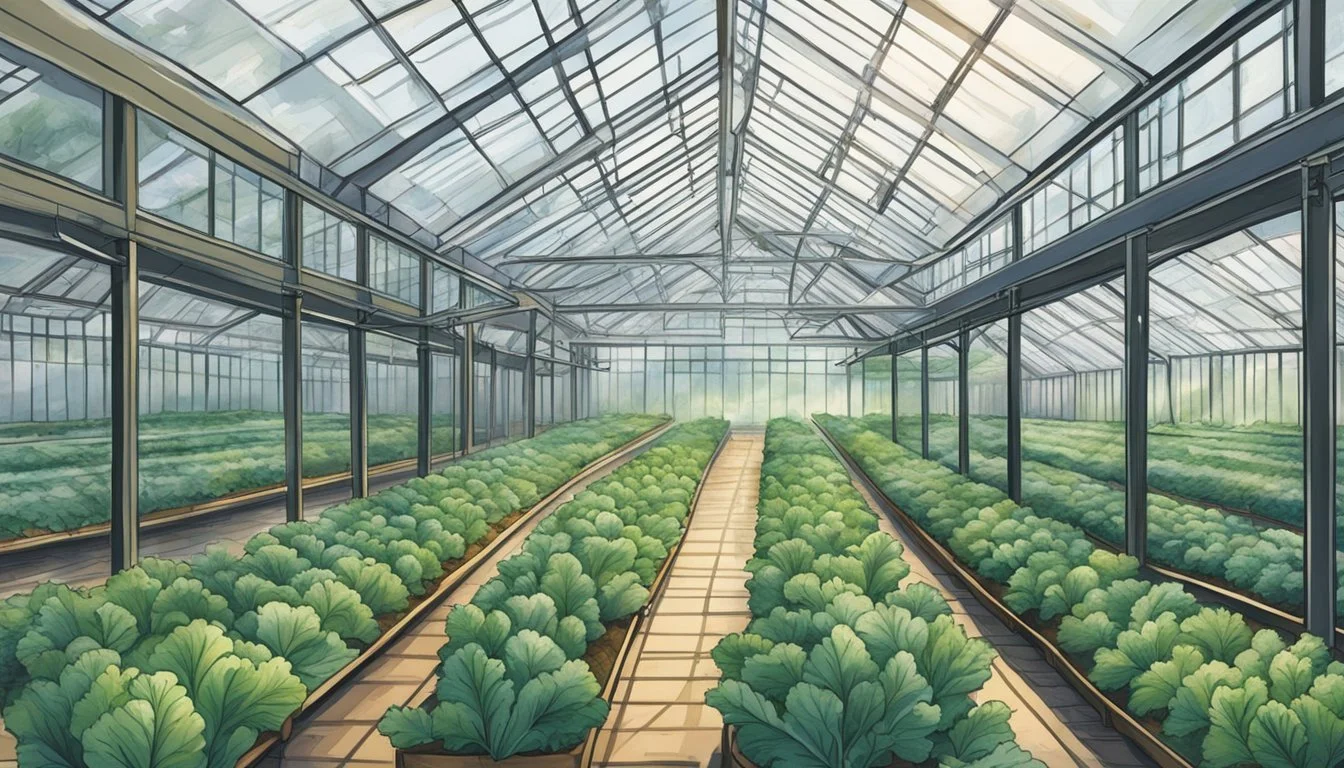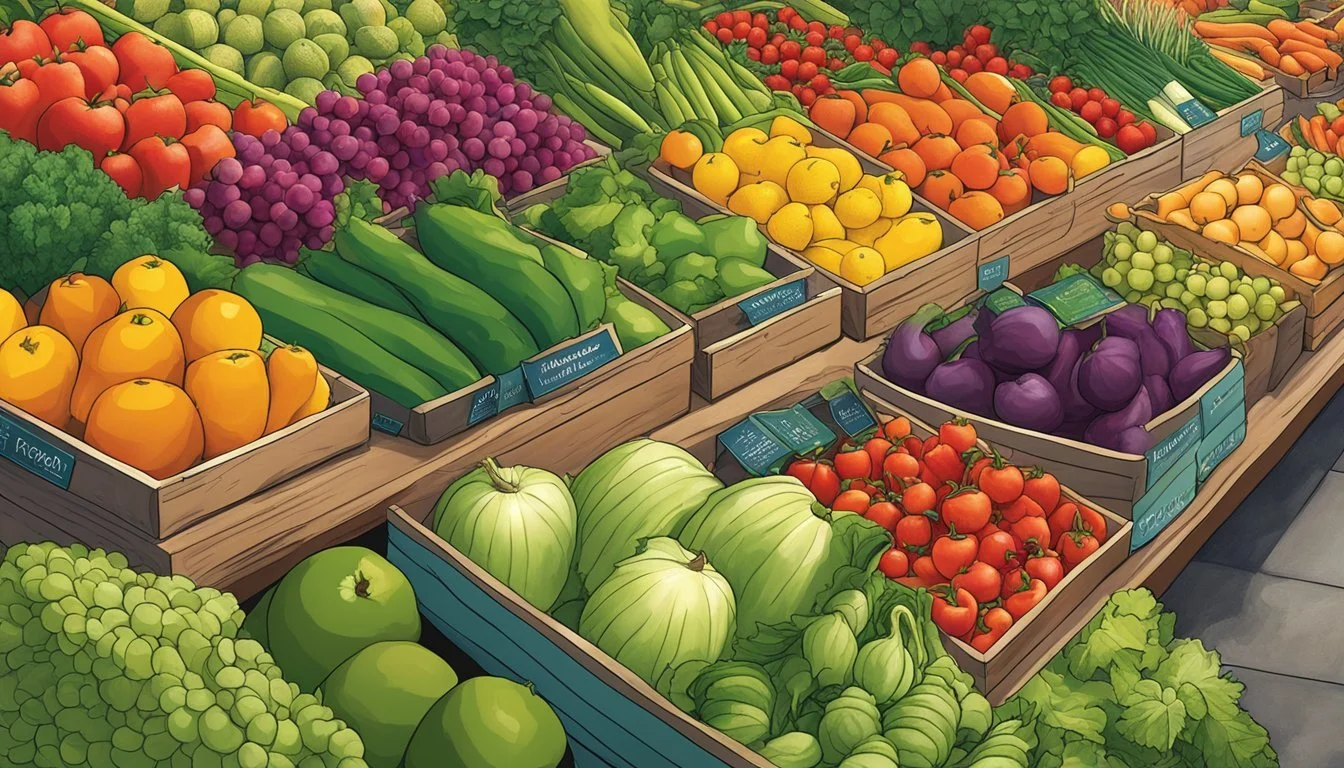New Hampshire Seasonal Fruit & Vegetables in February
A Guide to Winter Produce
This Article is Part of our New Hampshire Seasonal Fruit & Veg Calendar
February in New Hampshire is a month characterized by crisp air and a quieter agricultural scene, but it still offers a selection of seasonal produce. Despite the winter's chill, local farmers and markets provide an assortment of fruits and vegetables that thrive during the colder months or have been preserved through careful storage techniques. These crops offer the flavors of the region and are a testament to the resourcefulness of local growers who make the most of the shorter growing seasons in the Northeast.
The selection of fruits in New Hampshire during February is limited but delightful. Apples (how long do apples last?), which are harvested in late summer and fall, remain a staple, their crispness and variety undiminished thanks to modern storage methods. Citrus fruits, though not native, are also abundant, including varieties like blood oranges and clementines, which reach their peak in winter months and are often imported to the state.
Vegetable offerings are reliant on storage and hearty winter crops. Root vegetables such as carrots (how long do carrots last?), potatoes, (What wine goes well with potatoes?) and beets (how long do beets last?), which are harvested before the frost, remain available, providing a rich base for hearty cold-weather dishes. Some greenhouses extend the availability of certain produce, allowing items like spinach to grace tables even when snow blankets the fields outside. These seasonal fruits and vegetables are celebrated for their freshness and flavor, bringing a touch of winter's harvest to the New Hampshire plate.
Seasonal Overview
In February, New Hampshire's colder climate limits the variety of fresh produce available. Yet, local farms still manage to supply a selection of winter-hardy fruits and vegetables.
Fruit Availability
During the winter months, local fruit options are particularly sparse. Stored apples and pears from the previous fall’s harvest remain mainstays. These fruits continue to be available in a raw and fresh state, having been kept in cool, controlled environments to preserve their crispness and flavor. Citrus fruits are not locally grown due to the climate but are often imported and can be found fresh in markets.
Vegetable Abundance
Despite the chill of winter, a variety of vegetables remains available, often stored from autumn or grown in protected environments like greenhouses. Cabbage, kale, (What wine goes well with kale?) and leeks typically endure the cold well, while carrots, potatoes, onions, and turnips are commonly available from storage in a fresh and raw state. These root vegetables reflect the hearty fare that is much associated with the region's seasonal eating. Celery (how long does celery last?) may be less abundant but is still found in markets alongside fresh leeks and other cultivated alliums.
Winter Harvesting Techniques
In New Hampshire, February's cold climate poses unique challenges for harvesting seasonal crops, but appropriate storage methods and indoor growing practices can ensure the availability of fresh produce such as root vegetables and hardy greens.
Storage Methods
Potatoes, carrots, beets, and winter squash can be successfully stored during the cold months of February. He, she, or they can utilize insulated storage facilities, which maintain steady temperatures slightly above freezing and high humidity levels to prevent produce from drying out. For instance:
Potatoes require temperatures around 45°F and high humidity to minimize shrinkage and sprouting.
Carrots and beets benefit from sand or peat moss layers that help maintain humidity and reduce spoilage.
Winter squash prefers slightly warmer storage conditions, around 50-55°F, and can be kept on racks to facilitate air circulation.
Indoor Growing Practices
Growers in New Hampshire often turn to indoor growing techniques to maintain a supply of produce like herbs, greens, mushrooms, and certain root vegetables. Hydroponic systems, which use water enriched with nutrients, can be used for growing plants without soil.
Here are some specifics:
Greens such as lettuce can thrive in hydroponic systems or under grow lights in soil-based setups, providing a continuous harvest.
Herbs grown indoors require adequate lighting from grow lights and careful water management to avoid root rot.
Mushrooms like shiitake and oyster are well-suited for indoor cultivation on substrates like sawdust, requiring a balance of humidity and fresh air.
Parsnips can be sown in containers and placed under grow lights to extend their growing season.
Cooking and Preparation
In February, New Hampshire's seasonal produce lends itself to a variety of dishes, from fresh salads to comforting soups. Chefs take advantage of the robust flavors of winter vegetables and tangy fruits like lemons to create nutritious and satisfying meals.
Salads and Raw Dishes
Fresh, crisp salads can be enhanced with February's harvest. Arugula and radishes bring a peppery bite, perfect for a lively salad base. Integrating cabbage and thin slices of celeriac, topped with a lemon vinaigrette, offers a refreshing crunch. Thin slices of beets can add an earthy sweetness, while avocado provides creamy richness.
Simple Citrus Salad:
Arugula
Radishes
Sliced beets
Lemon dressing
Avocado slices
Hearty Main Courses
For main dishes, chefs celebrate with thick cuts of seasonal vegetables that withstand hearty cooking methods. Roasted broccoli and Brussels sprouts (how long do brussels sprouts last?)caramelize beautifully, bringing out their natural sweetness. Beets and carrots are often roasted to deepen their flavors, serving as robust companions to proteins or as centerpieces in a vegetarian feast.
Roasted Vegetable Medley:
Broccoli, cut into florets
Brussels sprouts, halved
Beets and carrots, diced
Olive oil
Sea salt (how long does sea salt last?)
Warm Side Dishes
Hearty side dishes featuring February produce add warmth to any meal. Celeriac can be mashed as a lower-starch alternative to potatoes. Cabbage and kale are often sautéed with garlic and onions for a nutritious and flavorful addition to the dinner plate.
Sauteed Kale and Cabbage:
Kale, chopped
Cabbage, shredded
Garlic and onions, minced
Olive oil
Soups and Stews
Soups and stews are a foundation of winter cooking, and February's produce provides many options. Leeks, parsnip, and celery contribute a base of deep flavors for various broths and stews. Hearty beans can be combined with kale and water to create a filling and healthful soup. Adding a squeeze of lemon juice enhances the natural flavors and adds a burst of brightness.
Hearty Bean and Kale Soup:
Beans, soaked and cooked
Kale, coarsely chopped
Leeks and celery, sliced
Parsnip, diced
Vegetable broth (how long does vegetable broth last?) or water
Lemon, juice for finishing
Health Benefits
Seasonal consumption of fruits and vegetables in New Hampshire during February offers substantial health advantages. The local produce available is not only fresh but also dense in essential nutrients beneficial for maintaining good health throughout the winter months.
Nutritional Content
Fruits like apples, which are readily available in New Hampshire during winter, are rich in vitamins, such as vitamin C. This helps strengthen the immune system against common illnesses. Citrus fruits, although not native to the region, are often at their peak elsewhere and shipped in, providing additional vitamin C and flavonoids that are crucial for reducing inflammation and promoting heart health.
Vegetables great in supply during winter months include kale, spinach, carrots, and beets. These vegetables come packed with vitamins, minerals, and antioxidants:
Kale and spinach are leafy greens high in vitamin A and K, important for eye health and blood clotting.
Carrots contain beta-carotene, which the body converts into vitamin A.
Beets are a good source of fiber, folate, and manganese.
Vegetable Key Nutrient Health Benefit Kale Vitamin K Supports bone health and wound healing Spinach Iron Essential for healthy blood cells Carrots Vitamin A Aids in good vision and immune function Beets Fiber Promotes digestive health
Dietary Importance
Eating a range of seasonal fruits and vegetables is key to a balanced diet. The fresh produce of New Hampshire winter, such as kale and carrots, provides a combination of vitamins and minerals that are vital for overall health. It ensures one's diet is varied, which is important for obtaining a broad spectrum of nutrients.
Incorporating these vegetables into daily meals can help meet the recommended daily intake set by dietary guidelines, which many individuals struggle to achieve. This helps in reducing the risk of chronic illnesses and supports holistic well-being. For example:
Consuming raw greens in salads or smoothies can boost one's intake of fiber and essential nutrients.
Adding steamed or roasted carrots and beets to meals can help increase satiety because of their fiber content, aiding in weight management.
Furthermore, opting for local produce ensures freshness, potentially enhancing both flavor and nutritional value. It also encourages eating whole foods over processed options, aligning with a more natural, healthful diet approach.
Local Agriculture
New Hampshire prides itself on a robust local agricultural scene, even during the cooler month of February. Residents benefit from access to fresh, seasonal produce, a testimony to the dedication of local farmers and the support of community initiatives.
Farmers Markets
In New Hampshire, farmers markets operate year-round, adapting to seasonal changes. These markets are essential for providing consumers direct access to fresh, local produce. In February, the availability of seasonal fruits might be limited, but markets often offer a variety of local winter vegetables such as root crops and winter greens. They are a hub for not only vegetables but also other farm products like cheeses, meats, and artisan goods.
Seasonal Vegetables Available in February:
Potatoes
Carrots
Beets
Winter squash
Community Supported Agriculture (CSA)
Community Supported Agriculture (CSA) is an integral part of New Hampshire's local agriculture, fostering a close relationship between residents and the farmers who feed them. Members buy subscriptions from local farms and in return, receive a share of produce throughout the farming season.
CSA Benefits:
Provides a steady income for farmers during the off-peak seasons.
Offers residents a chance to enjoy the freshest possible produce directly from the source.
Encourages sustainable and environmentally friendly farming practices by supporting local farms.
This direct-to-consumer approach ensures that even in the chill of February, New Hampshire's residents have access to the freshest and most nutritious produce while contributing to the state's agricultural economy.
Purchasing Tips
When shopping for fruits and vegetables in New Hampshire during February, consumers should focus on how to select the freshest options and how best to store them to maintain their quality.
Selecting Fresh Produce
For apples, one should look for firm fruits with no soft spots or bruises. The skin should be smooth and have a consistent color characteristic of the variety. For root vegetables like beets, carrots, and potatoes, select those that are firm and free from cuts or soft areas. Onions should be firm and dry with a papery outer skin.
Apples: Firm, smooth skin, no bruises
Beets/Carrots: Firm, no cuts
Potatoes: Firm, no green spots
Onions: Dry, firm, papery skin
Storing for Freshness
Proper storage ensures that fruits and vegetables retain their freshness and nutritional value. Apples should be kept in a cool, dark place or in a refrigerator crisper drawer, away from vegetables to prevent them from ripening too quickly. Root vegetables—such as beets, carrots, and potatoes—should be stored in a cool, dark, and well-ventilated space to minimize the loss of firmness and to avoid sprouting. Onions are best stored in a cool, dry location with good air circulation, separate from potatoes, as the moisture and gases from potatoes can cause onions to spoil faster.
Apples: Cool, dark place, separate from vegetables
Root Vegetables (Beets, Carrots, Potatoes): Cool, dark, well-ventilated space
Onions: Cool, dry, good air circulation, away from potatoes
Recipes and Usage Ideas
In February, New Hampshire kitchens celebrate the seasonal bounty with an array of recipes that showcase the fresh flavors. These recipes offer nutritious ways to enjoy both raw and cooked forms of local produce.
Fruit Recipes
One can capture the essence of February fruits in New Hampshire through simple yet delightful recipes. Apples, still crisp and sweet, can be sliced and added to smoothies for a healthful breakfast or turned into warm, comforting desserts like apple crisps. Pears, when ripe, lend themselves beautifully to both savory and sweet dishes. They can be poached for an elegant dessert or chopped into a fresh salad, offering a nice contrast of texture and flavor.
Apple Cinnamon Smoothie:
Blend together 1 chopped apple, 1 cup almond milk (how long does almond milk last?), 1/2 teaspoon cinnamon, a handful of spinach, and a scoop of protein powder for a refreshing and healthful drink.
Poached Pears with Honey:
Gently simmer pears in a mixture of water, honey, and a touch of vanilla until tender, then serve with a drizzle of the poaching liquid and a sprinkle of cinnamon.
Vegetable Recipes
February's chill calls for heartier fare, making it a perfect time to incorporate vegetables like sweet potato, brussels sprouts, cauliflower (how long does cauliflower last?), and broccoli into one's diet. Sweet potatoes (What wine goes well with sweet potatoes?) can be transformed into a sweet or savory side dish, taking on spices and herbs well. Roasted cauliflower and broccoli offer both health benefits and satisfying flavors, often enhanced with a simple seasoning of garlic, salt, and pepper. Brussels sprouts shine when roasted until caramelized and can provide a robust side to any main course.
Sweet Potato Mash:
Boil diced sweet potatoes until tender, then mash with a bit of butter, cream, and season with salt and pepper for a classic side.
Roasted Brussels Sprouts:
Toss brussels sprouts with olive oil, balsamic vinegar (how long does balsamic vinegar last?), garlic, and roast in the oven at 400°F until they're crispy on the outside for a deliciously irresistible side.
Garlic Roasted Broccoli and Cauliflower:
Chop broccoli and cauliflower into florets, toss with olive oil, minced garlic, and roast until tender and slightly charred.
Seasonal Challenges and Considerations
In February, farmers in New Hampshire navigate certain barriers to ensure the availability of seasonal produce. The winter month poses unique challenges affecting crop yield and supply.
Weather Impacts on Crops
February is a winter month in New Hampshire, and weather plays a significant role in the growth and quality of seasonal produce. Local greens, cabbage, and leeks, which are hardy vegetables, can be grown in cold frames or greenhouses, yet these methods are subject to the whims of extreme weather conditions. Farmers must carefully monitor and manage internal conditions to protect the plants from frost and freezing temperatures that are typical in New Hampshire winters.
Temperature: Sudden drops can damage even the most resilient crops.
Snow and Ice: Accumulation can hinder access to fields and facilities.
Sunlight: Shorter days result in less light for photosynthesis.
Supply Fluctuations
The availability of fresh, local produce in New Hampshire during February can fluctuate due to several factors. Extreme weather can disrupt supply chains, making transportation of goods to and from farms more challenging. Additionally, the yield of seasonal produce during winter is naturally lower than during the bountiful summer months, which can lead to a less predictable supply.
Access to Markets: Snowstorms can block roads, affecting delivery and market access.
Local Demand: A desire for fresh, local produce remains, although the winter variety is limited.
Storage and Preservation: Farms rely on these to extend the availability of certain crops beyond their natural growing season.


